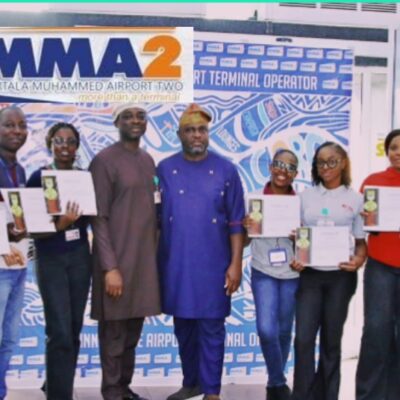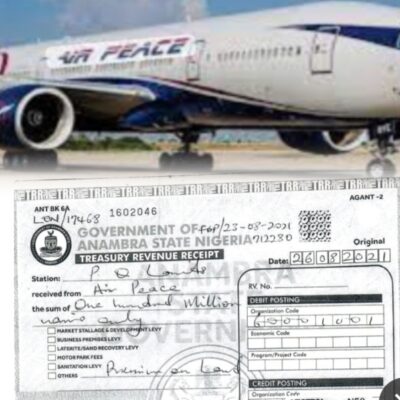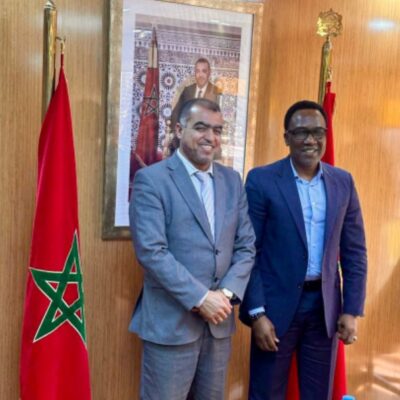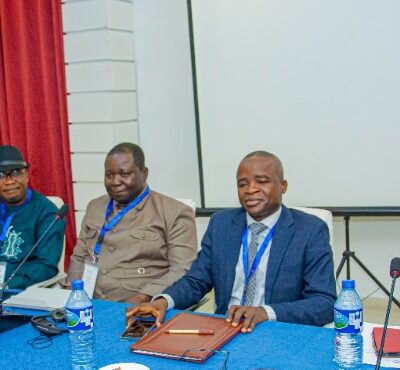
BY OLAPEJU OLUBI
The Rector, Nigerian College of Aviation Technology (NCAT), Zaria, Dr. Danjuma Ismaila has said that the institution is preparing for a major lift-off as it unveils plans to operationalise its long-awaited flight simulator.
The facility is an upgrade expected to reposition the institution as a top-tier aviation training centre on the global map.
In an interview with aviation correspondents, the Rector shared insights into NCAT’s renewed drive to attract international trainees, boost foreign exchange earnings and address critical infrastructure gaps.
Rising Enrolment and Infrastructure to Cater for the Students and Other Professionals;
This is one of the challenges I am currently facing. The mandate given to me was to reposition the college to become financially independent, boost its revenue, and increase its impact — not only in Nigeria but across Africa. The college has the potential to serve all the training needs of the aviation industry and attract participants from other African countries and even other continents.
The aviation industry is a global phenomenon. Whatever is certified by the NCAA here is equivalent to what is obtained in other parts of the world because we work based on ICAO standards and recommended practices. The standard certified by the NCAA is the same standard certified by the UK CAA. You can acquire your training or licensing in any part of the world. That means we have the opportunity to serve every region globally.
For instance, if you undertake training on an ATPL certificate here, it holds the same value elsewhere — such as in the UK, certified by the CAA. Our CAA is certified by the NCAA, which in turn is ICAO-certified. Therefore, we have the capacity to host participants from all over the world. Some of our courses are even run in collaboration with ICAO, allowing us to generate substantial foreign exchange for the country.
We have the potential to contribute significantly to national foreign exchange earnings. Once our flight simulators become operational, we expect more participation from Asian countries. Currently, both Nigerian and Asian pilots are queuing in Dubai, waiting for their turn to attend flight simulator training. When ours becomes operational here, people will begin queuing on our side, as these simulators are scarce globally. This will help us earn substantial foreign exchange.
One of the major challenges I’m facing is accommodation. Some of our trainees had to be accommodated outside the campus. I believe the previous management of the college did not prioritize this issue or was not aggressive enough in developing critical infrastructure. The Minister of Aviation and I are working day and night to reposition the college. This is a simple but limiting challenge — not technical, just the issue of accommodation — which restricts our student intake.
The college is also preparing for another programme. We are currently expecting some Egyptians who have requested a training session scheduled for June 16. One of our instrument rating programmes is targeted at them. These are air traffic controllers from Egypt seeking to learn. Two months ago, we trained personnel from French-speaking African countries in aviation English, but due to limited infrastructure, we were unable to fully accommodate their needs. With the right infrastructure, we can attract more foreign trainees, especially because our fees are affordable compared to other regions. Abroad, people struggle to pay for hotel accommodations in dollars, but here, our charges are lower — even though many of our courses are priced in dollars.
Investment to Reposition and Improve Facilities
As I mentioned earlier, there is a critical need for infrastructure that will help us reposition the college. One of the most important is decent accommodation. Most of the existing facilities are either in disrepair or not in a presentable state. These can be renovated or upgraded to the desired standard.
We also need classrooms and technical facilities for the various types of courses we offer — both locally and globally required aviation programmes. These facilities must be continuously upgraded. Owning the facility is not the end; we must constantly improve and modernize them in line with global developments. That’s why we need substantial investment to make our facilities truly international.
Some of the buildings date back to the 1960s and need to be upgraded to look modern. A student, especially one with international experience, will expect a certain standard. We must modernize our buildings to reflect international status. We’re already upgrading classrooms and equipment to accommodate more students. Some of our clients have large numbers of trainees, but we are limited by capacity — particularly in air traffic control training. They have complained that we cannot meet their training needs.
To address this, we are working on acquiring a 3D simulator to train more participants simultaneously. Many of them require this training to qualify for promotion. With increased participation, we will also generate more revenue.
Simulator
There are different types of simulators, and it is unrealistic to have simulators for every aircraft used in Nigeria. Even countries like the UAE have selected specific aircraft simulators based on demand. It’s a business decision — you don’t tie up capital in simulators for aircraft that are rarely used.
We plan to acquire simulators for aircraft that are popular and in high demand. For instance, the Boeing 737 has the highest number of aircraft in operation here, which is why we have a B737 flight simulator. Based on our analysis, the B737 is the most widely used aircraft in the country. The CRJ is also gaining traction.
If we can get additional support from the government to acquire more simulators, that would be beneficial. However, for now, we are starting with the B737 to test market acceptance — not just in Nigeria, but globally. If it is well received, we can then consider acquiring additional simulators.
Projection for 2025
Projecting enrolment or growth for this year or the next is difficult at this time because I am still trying to secure funding from the government. If we receive the necessary funds to increase our capacity — in terms of equipment and infrastructure — then I can provide accurate projections. Until then, I’m focused on securing support to build our infrastructure and procure needed equipment. Once that is done, we will be in a better position to make data-based projections.
How Much Is the Funding Gap?
I can’t provide an exact estimate, but I am aware of the projects we need. For example, the full flight simulator purchased about five years ago has not been put to use. I set up a task force and gave them a three-month deadline to resolve all outstanding issues.
One of the issues was certification by the NCAA. I personally met with the management of NCAA and explained our predicament. The college has invested heavily in manpower development, including training our personnel and theirs. As a result, NCAA has agreed to come in the coming week to begin the certification process.
Hopefully, within a month or two, our simulator will be operational. NCAA has the capacity to certify it. If not, they are at liberty to collaborate with their sister agencies — that is the essence of partnership: to assist one another in areas of weakness. At this stage, we are not concerned about whether it is them or their partners who come, so long as the work is done.
Workforce Retention and Succession Plan;
When I assumed office, one of the first challenges I noticed was the high staff attrition due to poor pay. Presently, we offer the lowest salaries among aviation agencies, which affects our ability to retain staff. Many of our trained professionals have left for greener pastures, especially in the private sector.
Our plan is to develop internal capacity by implementing a bonding system. We will sign agreempents with staff to ensure that certificates issued are used only for NCAT purposes.
You can’t receive training and then leave to work elsewhere immediately — we need to benefit from our investment in your development.
We have also approached the Salaries and Wages Commission. In fact, just yesterday, I spoke with them about granting NCAT special consideration regarding salary structure. This would help bridge the gap between us and the wider industry.
This is the same model used by the oil sector for the Petroleum Training Institute. There is no significant salary disparity between PTI and the oil industry, which is why they are able to retain their experts. We need to be treated in the same way. Currently, salary disparity is a major concern.





